While Inside Imaging has published an overview of how the AIPP went bankrupt, proud members have been recalling fond memories about how the Institute guided and inspired them.
The coverage of how the AIPP fell apart focuses on specific events which overlook the good times shared by so many Australian photographers and industry partners. To balance this out, we’ve requested a few prominent members share a few memories about the good ol’ days.
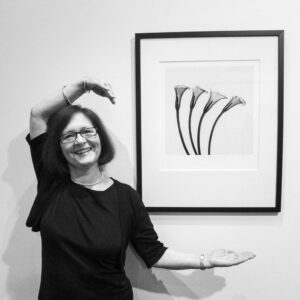
Jacqui Dean, National President 2006 – 2008
As I uploaded my 2021 APPA entries from an AirBnB in Paris, I was aware of the forewarning that the State Awards/ APPA sponsored by Epson would not go ahead if entries were low.
The following day it was all over. The AIPP was in voluntary administration. The AIPP may be no more, but for 75 years it was the peak body for professional photography in Australia, and for 27 of those years I was a member and a volunteer holding a variety of positions on State and National Boards, and for APPA.
I want to talk about the good times.
I joined the AIPP in 1994. It was pretty bloke-y then, and lots of men with beards seemed to be in charge. I went to a conference in Canberra where I met Bruce Pottinger, who owned L&P Photographic Supplies and Rob Imhoff, a guru in the commercial photography world.
My late husband, Tim and I opened an account with Bruce and received good advice from Rob about how to get advertising agencies to pay their bills. His method was to back his Range Rover up to the front door and not allow anybody out until he received a cheque.
I entered the State Awards in 1994 and was runner up to David Oliver and thought I had done okay. I then entered APPA and realised the learning curve was very steep.
In 1996 APPA was held in Melbourne. The presentation dinner took place in the National Gallery of Victoria’s impressive Great Hall, with ceiling features being the largest suspended piece of stained glass in the world, the Persian Rug of Light, a kaleidoscope of colours.
I was thrilled to win the 1996 Commercial Photographer of the Year and the Claude McCarthy Award. Ansett’s inflight magazine featured an article on my work and our business took off.
I wanted to give back to the AIPP so joined the NSW division and gradually worked my way up. I joined the National Board in 2004 as national treasurer, a huge responsibility. However, working with Eric Victor, Greg Hocking, Phil Kuruvita and Ian van der Wolde was always great fun. John de Rooy was an outstanding Treasurer. Such great guys to work alongside.
In 2006 – 2008 I became national president and then chair from 2008 – 2010. During that time, I was also treasurer for APPA, and thoroughly enjoyed working with two amazing APPA Chairs, the ever dependable Richard Bennett, and subsequently the multi-tasking, sharp-minded Peter Eastway.
We had some wonderful years and a lot of fun. There were challenges too, of course, and at times the demands of juggling our various roles for the AIPP along with running our own businesses was tough. But somehow we did it all.
I worked for the betterment of an organisation I believed in, and an industry and profession I am passionate about. I’d hazard a guess we all felt like that. I’m proud that when we retired from our positions, we left APPA and the AIPP in a strong financial position.
Over the years I made many long-lasting friendships in the AIPP not only with members but our wonderful sponsors who supported us year after year. Catching up with everyone at APPA was a special time, the highlight of our photographic year.
It can be a lonely existence running a small photographic business but being a member of the AIPP meant I knew I could reach out to so many people, and they to me.
So change is upon us, and the AIPP and APPA are no more, but I do hope that younger photographers with boundless energy take up the baton and start a new chapter.
John Swainston, National President – 2018 – 2019
The AIPP is no more. As an organisation that’s been an intricate part of my life for 42 years, it’s hard to accept.
I had the privilege to serve as a board member for two and a half years and a turbulent year as President. I am naturally saddened by its demise. Goodness knows we tried to turn things around. I am immensely heartened by the upswelling of goodwill to recall how much it has been the stepping stone for so many emerging and then leading photographers.
While it has been an organisation, most of all it has been about people. People who gave without seeking reward – who helped and encouraged. Creative people have high passion; sometimes there have been moments of excess passion and anger. But they have ultimately been because people cared passionately for the craft and prosecuted their beliefs on how to bring value and fellowship their way.
In looking back to some of the highlights, I was awestruck in 1981 by visiting American legend Arnold Newman to the ABC Studios in Sydney to meet Caroline Jones with just 30 seconds to airtime, when the then IAP president of the day overlooked the commitment!
I recall the fast-moving energy and focus of Peter Foeden in talks where we tried to bring an overarching body together in 1982 – The APIA, Australian Photographic Industries Association involving the profession, retailers and distributors.
Here he is with AIPP legend David Oliver in 2017.
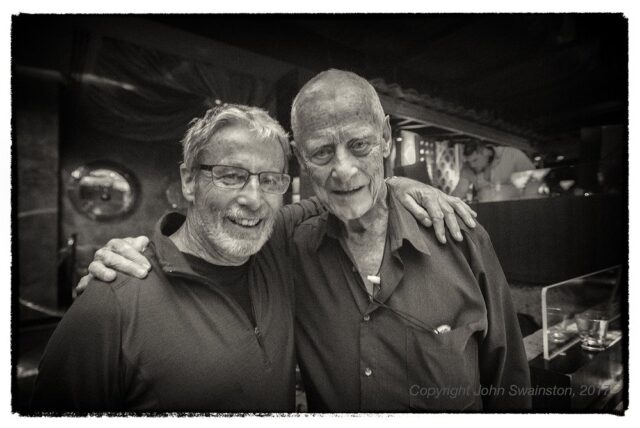
Peter Foeden also got me involved as a sponsor, something which lasted for nearly two decades. A fantastic investment.
I remember the stupendous Northern Territory 1989 meeting in both Alice Springs and Uluru and gathering under the breathtaking failing daylight on the world’s largest monolith. I learned more about Australian photography the next day as David Moore, L&P’s Bruce Pottinger and I waited for seven hours for a plane back to Sydney on the day before the Pilot’s strike.
A significant conference in Sydney in 2000 brought to the same stage both David Moore and Wolfgang Sievers, and test shot number seven of a prototype 1.9-megapixel Coolpix 990.
The 2003 David Moore Convention in Canberra, run by Hilary Wardhaugh, drew in a dictionary of Australian photographers, and was a fantastic collaboration with both the NGA and nascent National Portrait Gallery.
I savour the efforts of the ACMP, later merged with the AIPP, on copyright. To this day that effort has been nurtured and maintained by Sydney photographer, Christopher Shain.
Possibly the proudest day of my life was the Honorary Fellowship conferred on me by the Institute in 2005 for services to photography. Thank you Richard Bennett and Robert Gray. By contrast, I resent the ridiculous talent of Peter Eastway for his years as treasurer, company secretary and his award-winning photography. Way too much talent!
I cherish the emergence of women presidents – Alice Bennett, Jacqui Dean and Kylie Lyons – and a fabulous 2009 Melbourne conference which also featured the inimitable Ruby Spowart, where I was one of only a handful of males attending.
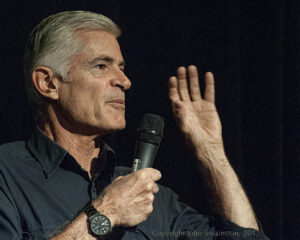
I celebrate the hundreds of members sitting in awe in Adelaide in 2011 to hear American photojournalist David Burnett, or at the 2012 Hunter Valley AIPP Nikon Event listening to both American photojournalist, James Nachtway, and Australian legend Steve Parish.
So much sharing, so much learning. Possibly a few too many light ales too!
The emotion of watching a livestream of the 2018 Epson NSW Awards, seeing my first entered images judged by AIPP judges provided insight and potential for growth and improvement, and a place as a finalist in the Commercial category. I was a late starter!
Coming together, sharing, learning, growing is what I take from my 42 years of association with the AIPP. Huge friendships. But also gone are PMA, PICA and the ACMP. What is not gone are the friendships, the bonds, the passion for images.
A new chapter will emerge from a new book. Photography, as it has done continually since 1839, will take a new turn, in a new form, in a new way. Long live great Australian and international professional photography.
Chris Shain, AIPP advisor for copyright

From where I sit, the most frustrating thing about the AIPP’s impending closure is that the long-term effort in building the AIPP as the voice – which had the resources and influence to make meaningful change to the photography industry – will now need a new vehicle.
My first contact with AIPP was back in the late 70’s and early 80’s, at meetings in David Cummings studio in Glassop St, Balmain in Sydney, where I started mixing with this fabulous industry we all know and love.
I’ve been an AIPP member off and on ever since, and was a founding member and the first elected president of ACMP. Through these AIPP and ACMP interactions, I have made at least a dozen lifelong personal friends that I speak with regularly. I’ve also developed many professional and creative friendships that have enabled my business to grow, and more importantly, have inspired me as a photographer. To me, being a photographer is not an occupation – it’s a vocation.
I’m concerned for the current generation of young photographers, who may miss out on these professional opportunities if an organisation like the AIPP is not around.
I’ve been an AIPP board advisor on copyright issues for a decade, a board member of the Australian Copyright Council for seven years, and for at least 30 years I’ve been pretty active in keeping the fire alight under the big and messy boiling pot of copyright reform for
photographers.
Although without hesitation, I’d also acknowledge the support and encouragement of every AIPP president and board since. Several AIPP presidents have travelled with me on some of these adventures.
Unfortunately, this activity has very long lead times and change generally moves at glacial pace. I was an integral part of the team from AIPP and ACMP that were successful in getting some amendments to section 35(5) of the copyright act in 1998. The process was quite an
eye opener to understand how difficult it was to change a couple of lines in a 700-page copyright act. This experience has stood me in good stead to keep working on these kinds of issues on behalf of the industry to this day.
An aspect I learnt very early on with lobbying activity – probably starting with Sales Tax issues in the early 90’s – is that to get anywhere at all, you either need deep pockets or to be speaking on behalf of a substantial group of potential voters. The AIPP and ACMP was exactly that.
The top end of town would listen when you said ‘I’m here on behalf 3000 members of a photo industry professional organisation’. Numbers really do mean something, believe me, they’re more powerful than the lone angry voice.
Over the last 30 years, the AIPP has been doing the whole industry a huge favour when, on behalf of the Institute I’ve given evidence at a Senate Inquiry; been invited to a round table at the Federal Attorney general’s office; made a submission to Productivity Commission hearings; presented to the Australian Law Reform Commission; developed strategy with the Copyright Council or Arts Law; or sought advice from expert IP lawyers, which the Institute willingly paid for.
And in the long-term this benefits members, as well as non-members alike. Some of the non-member and sideline criticism accusing the AIPP, and past like-minded representative organisations, of ‘never actually doing anything for the industry’, has been deeply troubling to me at times. And it’s unfortunate the AIPP has often been overwhelmed by day-to-day issues including APPA, that this active aspect of the Institute doesn’t get much airtime.
I could write several pages detailing all the benefits and wins for the photo industry where the AIPP played a significant role. Many members unfortunately wouldn’t be aware of, or haven’t paid much attention to this. Probably the most recent issue where AIPP played a very big part was some recent proposed amendments to the Copyright Act that were thankfully abandoned. This includes the introduction of a US-style “Fair use” exception to copyright infringement, as well as proposals around Orphan Works. Both these issues have a significant impact on photographers’ livelihoods, and have been robustly discussed for 15 years.
There are some very powerful interests that would have liked to see a different outcome for both these issues, but with the support and encouragement of the AIPP I’ve been able to put forward a professional photographers’ points of view during high level meetings with law makers.
It’s this successful lobbying for change from a large representative organisation in the future that is lost on many people with the demise of the AIPP. Where there’s no professional representative body, lobbying for change will become very challenging.
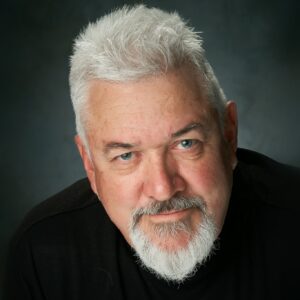
Robert Gray, National president – 1986 – 1987
Per Capita, the standard of photography in Australia is the highest in the world. With one exception.*
The AIPP was instrumental in this achievement. Many of us worked long and hard to make it happen, and we are crestfallen with recent events.
I recount one story:
I was given the job to organise our Sydney Convention in 1987. I called people to help and they contributed flawlessly.
The Convention was over three days at Artarmon, with Dean Collins at The Opera House as the closer. Good times, and hard work by many. I was in touch with many people then – one was a recently graduated Melbourne student, and I convinced him to make the investment and attend.
During afternoon break on day two, he pulled me aside and said: ‘I just want to tell you
I have learned more in the last two days than I did in three years”. I was euphoric at this quietly expressed opinion, and I knew he was thanking us all.
This man is still in the industry and friends of many.
Those many people in the Institute who have for countless years worked on Committees, held office, helped behind the scenes, and our spouses and families can be proud of the AIPP and what it managed to achieve.
*Oh, and the exception is New Zealand.
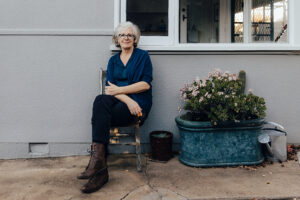
Hilary Wardaugh, former AIPP Licentiate M.Photog IV, and dedicated volunteer
I was very sorry to hear that the AIPP has closed. When I joined as a student in 1996 I decided to be an active part of the membership from the start, and volunteer for State and National roles – something I did with gusto and passion until I left in 2019.
Through those roles I met truly wonderful and talented photographers from all over Australia and New Zealand, many of which are my friends to this day. A highlight for me was organising the David Moore Convention in Canberra in 2003, after the death of David Moore. I met Lewis Morley, Trent Parke and Narelle Autio, John Gollings, Ken Duncan and others, which for me as a relatively new photographer was a truly wonderful and eye-opening experience.
David McCarthy OAM, National President 1976 – 1977
AIPP – RIP . Everyone, it’s been a week now and I’ve held off commenting. Now is my time. I was there at the birth, and now the death.
Firstly: as somebody has commented, ‘lets get back to the pub and have a few beers like how it started’, or words to that effect. Wrong – that is not the way it started.
In March 1944, as a result of increasing problems in the profession brought about by conditions caused by World War II, a group of representatives of the state professional photographer associations of Queensland, New South Wales, Victoria, South Australia and Western Australia met in Melbourne to discuss the possibility of forming an Australian Association to speak as a united voice and to represent the photographic profession throughout Australia.
As a result of this inaugural meeting, which was under the chairmanship of a Mr E.L.Sharpe of Victoria, The Professional Photographers Association of Australia was formed. Claude McCarthy from Queensland was elected President of this new organisation.
The name was changed to ‘The Institute of Australian Photographers’ on the July 1, 1963 by postal ballot. On May 25 – 27, 1964 a conference was held in Melbourne – this was the first meeting held under the new name of ”The Institute of Australian Photographers”.
As at the date of that May 1964 Conference, the names of the “Institute of Australian Photographers” member associations were:
The Institute of Australian Photographers, New South Wales Division.
The Institute of Australian Photographers, Victorian Division.
The Institute of Australian Photographers, Queensland Division.
The Institute of Australian Photographers, South Australian Division.
The Professional Photographers Association of West Australia.
Later, Australian Capital Territory joined on July 1, 1966 and Tasmania on 1st Jan 1973.
It was also decided that membership was to be open to all persons engaged in the profession. At first it was employers only, then employees. Also a provision was to be made later for representation of firms and others with associated interests in the profession.
This was the nucleus around which ‘Articles of Association’ were formulated. After perusal by the state divisions and further discussion and approval, the first official Institute meeting, convention of state, and other invited associations was held at Newport, NSW on September 26, 1965. The Articles of Association were subsequently ratified on January 26, 1966 at a Federal Council meeting in Sydney.
That is the ‘birth’ history.
In those days – before email, mobile phones and social media – every communication was by letter or interstate trunkline phone calls. All at the individual’s own expense. State meetings were held on weekends, or after work, and were individually funded. No expenses were paid by anyone, other than the individuals involved.
In 1970 a ‘Merit Award’ system, similar to the USA system, was introduced. Prior to this whenever a convention or conference was held, the local State Division membership was asked to display prints for the interest of the delegates. There was no judging or even discussion, they were merely an interest item. The first ‘National Print Judging’ was held in 1977 and the prints went on display at Hypo 77 on the Gold Coast. Seventy one members submitted 268 prints.
Initially National and State Conventions were held each year in a different state, with the eastern states being most favoured because of the population base there, along with proximity of major suppliers and the most economical airfares available for the majority of attendees.
The national conventions were know as ‘Hypos’ – e.g. Hypo ‘77, Hypo 79. Federal Council meetings were held at the beginning of these functions thereby enabling a better use of Institute finances. Institute finances in this country were never a strong point due to small population by comparison to overseas countries.
The ‘trade support’ was paramount to the success of the convention as their financial input was considerable. Often the support from trade was totally responsible for keeping the convention finances ‘in the black’ and if memory serves me correctly, on more than one occasion we were ‘saved’ by the big fellas.
The way I see it, in recent years, the main emphasis of the membership has been on the gaining of awards to the exclusion of all else – on the production of photographs purely for competition. This was never the direction the Institute was designed to travel. The meeting of members at functions and by picking up the telephone – rather than blanket impersonal posts on social media – appears to have fallen by the way side. The original main core of the body changed dramatically. Yes I’m aware of Covid.
This is where time and lifestyle has made the changes. Everything has a life – even us – the Institute that was born, had evolved into a completely different organisation. It is all now an important item in the history of Australian Photography. Lets dwell on that and be proud. It’s easy to criticise but more mature to accept and move on.
The need for a similar but different organisation? Why not? Nothing ever stays the same or lives forever. A hint from – some say, an old fella – gather the positive thinking people around you, ignore the whingers, and those with empty offers and negative attitudes, and seek the power to see the difference!
– Some of the above info is included, plus a lot more, in the book “A History of Professional Photography in Australia” by Paul Curtis. ISBN: 978-0-9757266-1-7.





So many great memories and history associated with the AIPP. Decades of it. I was only around for 13 or so years, but, like so many others, built life-long friends that I credit the AIPP for. I feel fortunate to have been able to immerse myself in the industry and be inspired by so many legends of photography, learn from the masters, and, later, guide some up-and-comers. The rich history and the giving nature of so many amazing people is what made the AIPP great.
Don’t cry because it’s over; smile because it happened. ~ Dr Seuss
I for one wish to acknowledge the work that Chris Shain has undertaken with copyright reform.
Tirelessly toiling to improve what many younger practitioners may disregard as ‘pointless’ due to the ‘gram and Farcebook, Chris has made a significant contribution to protecting photographers rights whatever their status – Pro or Am.
As a photographer and custodian of an archive representing almost five decades of commercial and personal work, copyright is livelihood.
Pre digital era teachings drilled this into students early on and should still be the case.
Without copyright reform, image ‘thieves’ will continue to steal income from creators and devalue their hard earned reputations.
On behalf of all photographers Chris, thank you and please keep up the great work.
I only ever went to one AIIP event, not being a pro photographer but a supplier to pros, in the early 80’s Bob Ansett of Budget spoke at an AIIP event on customer service, ideas I have used ever since.
I think the greed and mismanagement of IDEA, who weren’t there for the greater good of the whole photo industry, set the rot. PMA Australia under the excellent leadership of Peter Rose could have been viable but for PMAI emptying the coffers as it sunk, emulating Kodak in not excepting change.
Those of us who managed change and are still in the industry don’t need a national body but miss the fellowship it once provided.